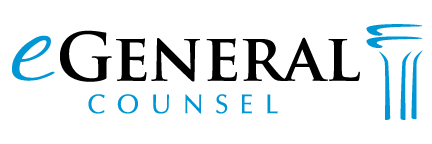 Previous articles in this series contained an overview of private capital raising under U.S. law through private sales of securities (i.e., sales not registered with the Securities and Exchange Commission (SEC)), and the broad definition of the term “securities” under the securities laws. This article focuses on the requirements of private placements under SEC Regulation D, which is the most commonly used private placement exemption in the U.S. A future article in this series will discuss additional private placement exemptions that are available to companies wishing to raise capital privately in the U.S. In many cases, more than one exemption will be applicable, and if the circumstances permit, a transaction can and should be structured to qualify for as many of these exemptions as possible without changing the fundamental business terms of the transaction.
Previous articles in this series contained an overview of private capital raising under U.S. law through private sales of securities (i.e., sales not registered with the Securities and Exchange Commission (SEC)), and the broad definition of the term “securities” under the securities laws. This article focuses on the requirements of private placements under SEC Regulation D, which is the most commonly used private placement exemption in the U.S. A future article in this series will discuss additional private placement exemptions that are available to companies wishing to raise capital privately in the U.S. In many cases, more than one exemption will be applicable, and if the circumstances permit, a transaction can and should be structured to qualify for as many of these exemptions as possible without changing the fundamental business terms of the transaction.
While a “private placement” is technically, in the words of Section 4(2) of the U.S. Securities Act of 1933 (Securities Act), an offering of securities “by an issuer not involving any public offering,” this phrase is often applied to other types of securities offerings by issuers that do not require SEC registration because of some other exemption from registration. The most common of these is the exemption in Sections 3(b) of the Securities Act for certain offerings under $5 million.
Regulation D contains three basic exemptions. Two of these come under Section 3(b) of the Securities Act: Rule 504, for offerings in which the aggregate offering price does not exceed $1,000,000, and Rule 505, for offerings in which the aggregate offering price does not exceed $5,000,000. It also contains, in Rule 506, an exemption for offerings in which the aggregate offering price may be any amount. Rules 505 and 506 are limited to 35 non-accredited investors; Rule 504 does not have any such limitation, and permits certain types of public offerings if regulated by the states in which the securities are sold.
Finally, all of these exemptions apply only to the requirement to register the securities with the SEC; the other provisions of the Securities Act, including the anti-fraud provisions, are still applicable.
1. Which Exemption to Use?
In deciding which exemption to use, several factors should be considered:
- The Dollar Amount of Capital Sought to be Raised. Some exemptions are available only if the aggregate offering price of the securities does not exceed a certain amount, $1,000,000 in the case of Rule 504 and $5,000,000 in the case of Rule 505. The trade off is that while Rule 506 has no dollar limit, each investor who is not an accredited investor (either alone or with his purchaser representative(s)) must have such knowledge and experience in financial and business matters that he is capable of evaluating the merits and risks of the prospective investment, or the issuer reasonably believes immediately prior to making any sale that such purchaser comes within this description.
- How Many Investors will be Participating in the Offering and Whether any will be Non-Accredited Investors. Rule 504 permits an unlimited number of investors, accredited or non-accredited, but no more than $1,000,000 may be raised. Rules 505 and 506 permit larger offerings, but no more 35 non-accredited investors may be included.
- Whether the Investors and the Issuer will Reside in a Single State. If so, the intrastate offering exemption under Securities Act Section 3(a)(11) and SEC Rule 147 may be available. The Issuer is a resident of a state for these purposes if at least 80% of its gross revenues are derived form the state, at least 80% of its assets are located in the state and at least 80% of the net proceeds of the offering will be used in the state.
- Whether the Offering will be Limited to Officers, Employees and Consultants of the Issuer. If so, Rule SEC Rule 701 provides an exemption specifically tailored for offerings to employees and others that may be more flexible than Regulation D.
2. Basic Concepts Applicable to Regulation D Private Placements
Certain basic concepts apply to all Regulation D Offerings.
Integration
It is important to know when two offerings will be treated as part of a single larger offering for purposes of Regulation D. For instance, if an issuer sells $4,000,000 of common stock to 30 non-accredited investors on March 1 relying on Rule 505 and then sells $2,000,000 of preferred stock on June 1 to another 25 non-accredited investors, may the issuer rely on Rule 505 for the second sale? Rule 506?
Offers and sales of securities that are made more than six months before the start of a Regulation D offering or are made more than six months after completion of a Regulation D offering will not be considered part of that Regulation D offering, so long as during those six month periods there are no offers or sales of securities by or for the issuer that are of the same or a similar class as those offered or sold under Regulation D, other than those offers or sales of securities under an employee benefit plan. In our example, the two offerings are within six months of each other, so there is a danger that they could be “integrated” into a single offering. If so, they would not qualify for either Rule 505 (because the aggregate purchase price exceeded $5,000,000 and the number of non-accredited investors exceeded 35) or Rule 506 (because the number of non-accredited investors exceeded 35).
The following factors are considered when determining whether two offerings should be integrated for purposes of Regulation D:
- Whether the sales are part of a single plan of financing;
- Whether the sales involve issuance of the same class of securities;
- Whether the sales have been made at or about the same time;
- Whether the same type of consideration is being received; and
- Whether the sales are made for the same general purpose.
In our example, the sales involved different classes of securities (preferred vs. common stock) and were made three months apart. However, they were made for the same type of consideration (cash). Whether the offerings would be integrated would therefore turn on whether they involved a single plan of financing and were made for the same general purpose.
Accredited Investors
Accredited investors are considered to be capable of evaluating the risks of an investment and to have the financial resources necessary to withstand the risk of loss. For this reason, the minimum level of information that must be disclosed to non-accredited investors in Rule 505 and 506 offerings does not apply to accredited investors. Unlike with non-accredited investors, there is no limit on the number of accredited investors that ay participate in a Rule 5050 or Rule 506 offering.
There are eight categories of accredited investor. Any person who comes within any of these categories, or who the issuer reasonably believes comes within any of the following categories, at the time of the sale of the securities to that person, will be accredited:
(1) Most types of banks, insurance companies, securities broker-dealers, insurance companies, mutual funds and registered investment companies and small business development companies, SBA small business development companies, state employee benefit plans with total assets in excess of $5,000,000, and ERISA benefit plans if the investment decision is made by a plan fiduciary that is either a bank, savings and loan association, insurance company, or registered investment adviser, or if the employee benefit plan has total assets in excess of $5,000,000 or, if a self-directed plan, with investment decisions made solely by persons that are accredited investors;
(2) Any private business development company under the U.S. Investment Advisers Act of 1940;
(3) Any non-profit organization described in section 501(c)(3) of the Internal Revenue Code, corporation, Massachusetts or similar business trust, or partnership, not formed for the specific purpose of acquiring the securities offered, with total assets in excess of $5,000,000;
(4) Any director, executive officer, or general partner of the issuer of the securities being offered or sold, or any director, executive officer, or general partner of a general partner of that issuer;
(5) Any natural person whose individual net worth, or joint net worth with that person’s spouse, exceeds $1,000,000. For these purposes:
- The person’s primary residence is included as an asset;
- Indebtedness that is secured by the person’s primary residence, up to the estimated fair market value of the primary residence at the time of the sale of securities, is not included as a liability (except that if the amount of such indebtedness outstanding at the time of sale of securities exceeds the amount outstanding 60 days before such time, other than as a result of the acquisition of the primary residence, the amount of such excess must be included as a liability); and
- Indebtedness that is secured by the person’s primary residence in excess of the estimated fair market value of the primary residence at the time of the sale of securities must be included as a liability;
(6) Any natural person who had an individual income in excess of $200,000 in each of the two most recent years or joint income with that person’s spouse in excess of $300,000 in each of those years and has a reasonable expectation of reaching the same income level in the current year;
(7) Any trust, with total assets in excess of $5,000,000, not formed for the specific purpose of acquiring the securities offered, whose purchase is directed by a “sophisticated person,” as described in Rule 506.
(8) Any entity in which all of the equity owners are accredited investors.
Counting the Number of Purchasers
Rules 505 and 506 are limited to offerings in which the number of non-accredited investors does not exceed 35 persons. For these purposes, the following persons are excluded from the count:
- Any relative, spouse or relative of the spouse of a purchaser who has the same primary residence as the purchaser;
- Any trust or estate in which a purchaser and any of the persons related to him as specified in the preceding bullet or the following bullet collectively have more than 50 percent of the beneficial interest (excluding contingent interests);
- Any corporation or other organization of which a purchaser and any of the persons related to him as specified in the preceding two bullets collectively are beneficial owners of more than 50 percent of the equity securities (excluding directors’ qualifying shares) or equity interests; and
- Any accredited investor.
In addition, a corporation, partnership or other entity shall be counted as one purchaser. If, however, that entity is organized for the specific purpose of acquiring the securities offered and is not an accredited investor due to the fact that not all of its equity owners are accredited, then each beneficial owner of equity securities or equity interests in the entity will count as a separate purchaser for all provisions of Regulation D, except to the extent provided above.
Finally, a non-contributory employee benefit plan under ERISA shall be counted as one purchaser where the trustee makes all investment decisions for the plan.
The next article in this series will discuss the evolving rules on advertising and general solicitation in private placements, and restrictions on resales of privately placed securities. This will be followed by an article discussing the specific requirements of the different exemptions in Rules 504, 505 and 506.

